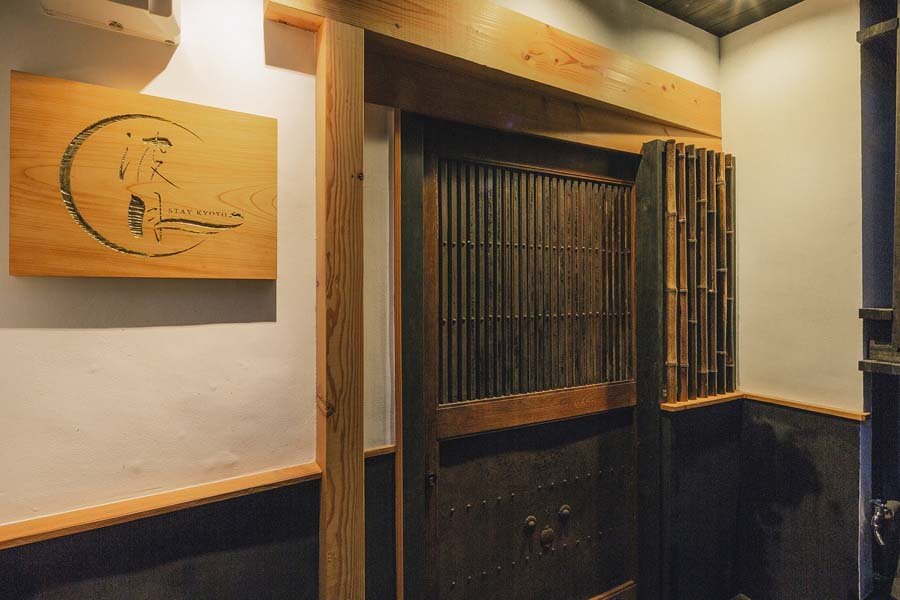
About
The Hazuki Kyoto Story
Hazuki was originally built at the beginning of 20th century and used to be the Okiya for Maiko. With the help of our team of skilled artisans and well-applauded architect, Hazuki went through an extensive renovation to create a relaxed and refined place where guests can amply experience Japanese beauty and culture.
Our Architect
Mr. Hashimoto, the designer and architect of Hazuki Kyoto, has extensive experience in designing Japanese-style hotels, residential, commercial, and municipal construction projects.As a Kyoto native born and bred, the beauty and elegancy of Kyoto Machiya (town houses) had a profound impact on his design philosophy.
“Being able to feel the bountiful nature with five senses is vital to a residence," Hashimoto says, "Through the ages, the ingenuity to live in harmony with nature has always been a part of Japanese architecture. Coexistence is a Zen spirit; it’s also a world-class Japanese value. More than a fancy, edge-cutting structure, I wanted to produce an architectural space where people can smile and feel peaceful, and relaxed.”
Our Master Carpenter
We enlisted the expertise of Mr. Nakamura as the master carpenter of Hazuki Kyoto.
Now a 70-year-old seasoned veteran of his craft, he started his career at age of 16, serving as his father's carpentry's apprentice. He cultivated top-level knowledge and skills in Japanese carpentry having handled traditional Japanese wooden structures for over 50 years. He preserved most century-old timbers used in the previous Hazuki Kyoto building. According to Nakamura, “It is becoming harder to find high-quality wood. The modern, replanted trees are not good because of their coarser grain. Those which have stood for many years in the wind and rain are the best quality.” Thanks to Nakamura san’s know-how, all original beams were preserved.
Over the course of Hazuki Kyoto's 10-month renovation, we were very impressed with Nakamura's attitude toward wood, work, and life.
Japanese Aesthetics
Both our architect designer and we feel sympathy for Japanese literature titan Junichiro Tanizaki’s aesthetic philosophy that “Were it not for shadows, there would be no beauty” as well as Japanese’ love for traditional, organic materials.
In Hazuki, various designs and features which reflect this aesthetic philosophy can be found.
Antique furniture & fixtures
There is a certain Japanese sensibility found in objects that have been used and loved for generations. There is a living legacy embedded in furniture, through the process of aging. It amplifies, rather than mutes, the material’s inherent splendor.
As the wood darkens and the grain grows more subtle with years, the materials acquire an inexplicable power to calm and sooth.
Almost all of the wooden fixtures used in Hazuki Kyoto, including sliding doors, wicket doors, Kurado, ranma screens and beams are antiques, originally used in century-old houses built in Niigata or Kyoto. We want our guests feel the beauty of Japan’s by-gone era during each and every stay.
Subtle lighting & Japanese paper
Japanese find beauty not in the thing itself but in the patterns of shadows, the light and the darkness, that one thing against another creates. Consequently, excessive illumination can be an assault on the beauty of shadow. To preserve the shadow in the rooms, we took in the indirect lighting and Japanese paper. Both of them give a certain feeling of warmth, calm, gentle and repose.
The Japanese Experience
Tatami - traditional Japanese straw flooring
Low table
Folding screen
Zabuton - cushions
Futon - bedding
Wooden footwear
Bath tub and Sink / Basin
The bath tub and all wash bowls are Shigaraki ware.
Shigaraki pottery is one of Japan’s Six Ancient Kilns, famous for its rustic appearance and human touch. The bathtub is individually handcrafted by artisans. Contrary to what you might imagine, the rough surface perfectly fit the curve of your back, it is sure to provide a unique bath experience.
**Also, you can find a movie of bathtub production : http://www.ryumeikan-honten.jp/furo.html
which should be very comfortable during the winter season.
Japanese lacquer ware, tea ceremony, traditional dolls, folding screens, etc. are on display to give guests a pleasant visual experience.
Your Journey Awaits.
Check the dates, room availability and reserve your stay today.










